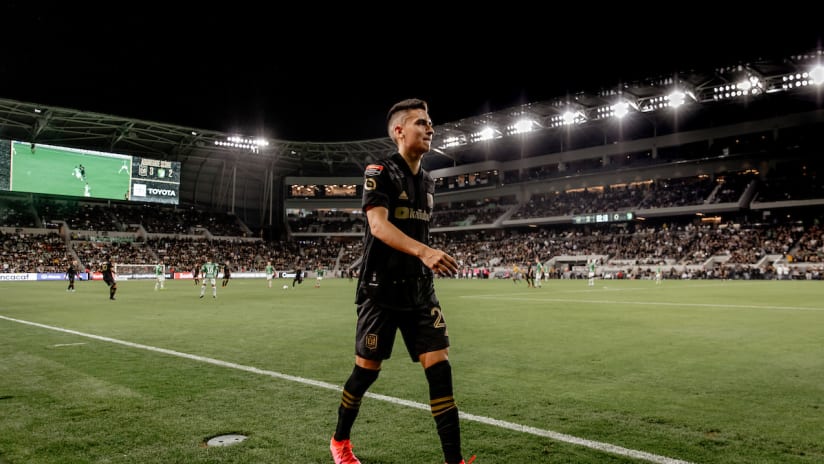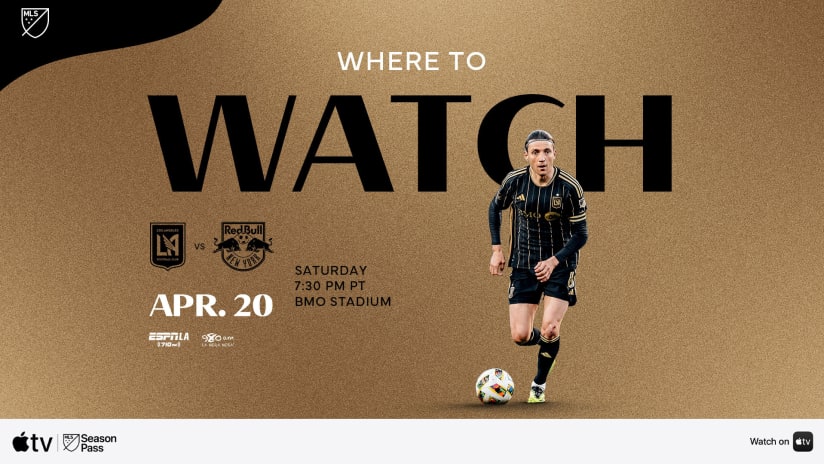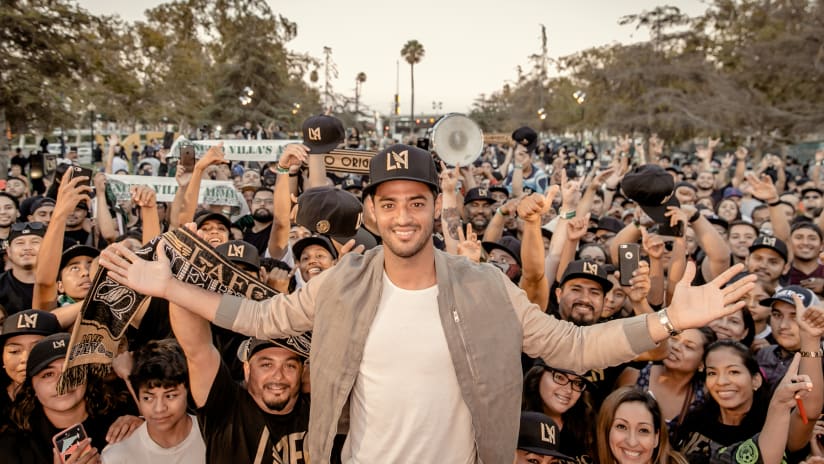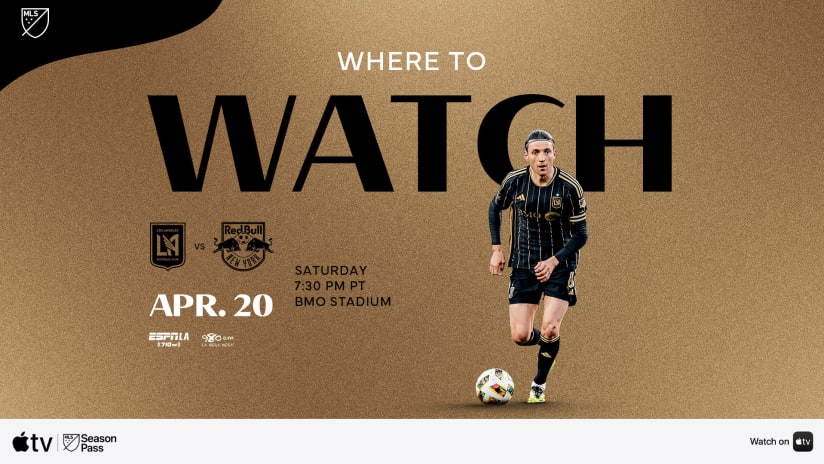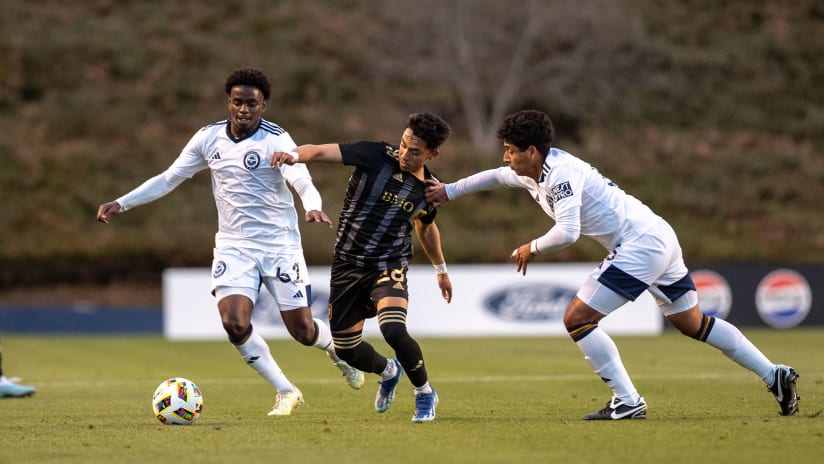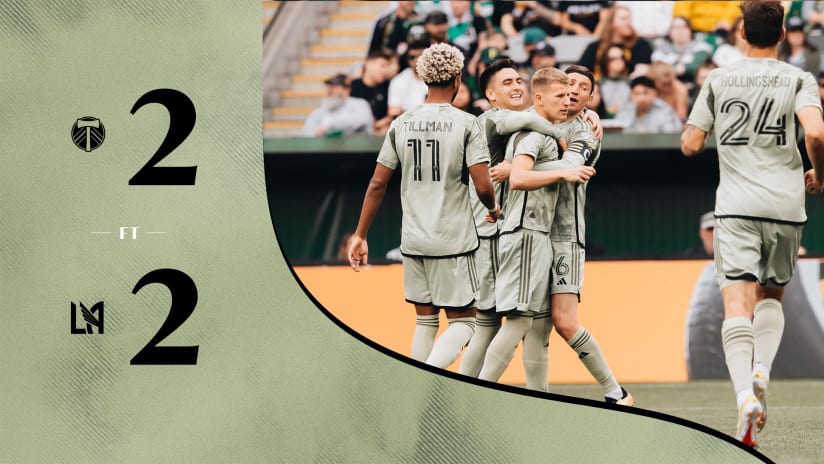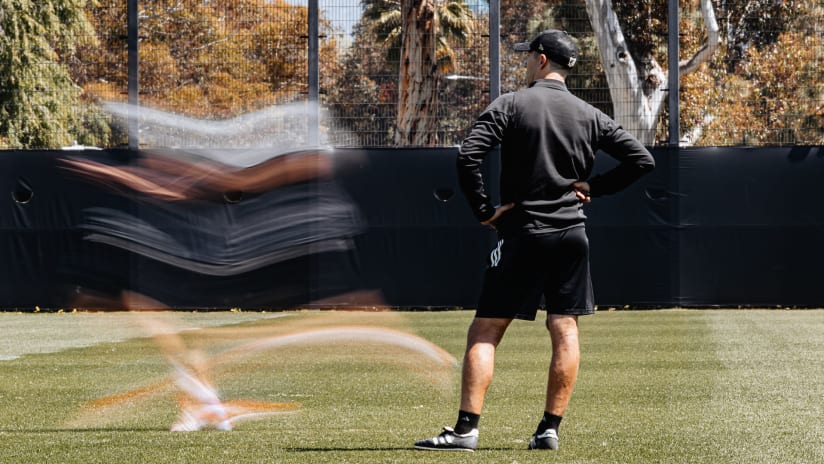READ THE FULL ARTICLE ON THEATHLETIC.COM
LAFC’s Eduard Atuesta is considered to be one of Major League Soccer’s best defensive midfielders, but Atuesta isn’t a prototypical ball-winning enforcer. In fact, the 23-year-old Colombian grew up playing in a more advanced role.
“I played as a No. 10 from an early age, as a traditional No. 10 without hardly any defensive responsibilities,” Atuesta told The Athletic. “I attacked and assisted and played really close to the (opponent’s) box.”
Atuesta is an interesting case study. He’s an example of a modern No. 6 and an ideal two-way central midfielder for Bob Bradley’s particular brand of soccer. However, defensive midfielders are usually pegged as hard-nosed and one dimensional. Regardless of the positional profile, a defensive midfielder must offer balance and continuity in possession, as well as effective defensive pressure.
Real Madrid’s Casemiro is a throwback No. 6 who has been instrumental at the Bernabeu since his arrival in 2013. Chelsea’s N’Golo Kante blurs the lines with his ability to push the ball up the field, but the Frenchman was once considered to be the best defensive midfielder in the world. Closer to home, Diego Chará has epitomized that role in MLS.
Atuesta’s rise as one of the league’s top central midfielders did not occur without its own set of growing pains, though. He has been a big part of LAFC’s attack and their ability to overwhelm the opposition’s midfielders, but the young Colombian had to change his style of play before becoming the type of midfielder that he is today. Atuesta was raised on a style of football that is entrenched in every technical midfielder who grows up playing in the land of Carlos Valderrama.
For decades, Colombia has produced central midfielders with aspirations of becoming the next El Pibe. The charismatic Valderrama, the most influential No. 10 in Colombia national team history, marked an important era in world soccer, and helped revolutionize South American tactics by becoming a player who was constantly around the ball. He would pass and immediately receive, methodically working his way down the field in short increments before splitting open a defense with precision as he neared the opponent’s goal.
Atuesta, like most technical No. 10s in Colombia, played the same way as a young academy player with Independiente Medellín. The club’s U-15s already featured a creative playmaker, so Atuesta played deeper after his coach noticed that the young midfielder had the ability to regain possession and distribute accurately. Playing behind a No. 10 changed the way Atuesta saw the game, and it opened the door to be an integral part of LAFC’s cutting-edge attack.
“I was able to see the entire field, rather than playing with my back to goal,” said Atuesta. “That allowed me to recognize the diagonal ball and find our wingers. I could play into our No. 10 and leave him free to combine and create. I really liked it and that’s where it all started.”
It was a welcome change for Atuesta that would foreshadow his role in Bradley’s system, and his on-field relationship with LAFC’s Carlos Vela, the league’s biggest star. As part of LAFC’s high-flying attack that features Vela, Diego Rossi and Brian Rodríguez, the mild-mannered Atuesta’s consistent play often goes unnoticed. But deep down, Atuesta is strong-willed and determined to make the jump to European football sooner than later.
Atuesta is from Vélez, a small town roughly seven hours away from Medellín by car. Vélez is located in the Santander Department in northeast Colombia, where the people are known for their character and impassioned work ethic. Atuesta inherited his mother’s appreciation for discipline and credits his grandfather, father and uncle for his love for the game.
The technique that one sees from Atuesta today is the product of years of individual training with his grandfather.
“We wouldn’t just play for fun,” Atuesta said. “Playing for fun was the reward at the end of two hours of training. Control the ball with my left foot. Control the ball with my right foot. I’d play the ball against a wall and get used to using my left foot. He’d throw the ball up in the air and have me bring it down with the inside of my foot, with my instep and the outside of my foot.”
As a five-year-old, the frustration of a mistimed touch was enough to discourage Atuesta. But he said that those hours of hyper-focused training would pay off during pick-up games with kids from his neighborhood.
“I realized that I was way ahead of them,” he said. “That motivated me.”
Atuesta can make the game look effortless, but he maintains an exhaustive attention to detail. He’s obsessed with his personal statistics, particularly the ground that he covers in training and matches and, even more importantly, his passing accuracy. His personal goal is to consistently finish above 90 percent passing accuracy in every match, which can be challenging when he’s being asked to play fast and push LAFC’s attack forward. He ended the 2019 MLS season with an overall pass accuracy of 87 percent. During the MLS is Back Tournament, he had 85 percent accuracy against Houston and 84 percent against the Galaxy.
“It’s difficult because I like to take risks with my passes, especially my through balls and the timing of my diagonal balls,” Atuesta said.
In Colombia, Atuesta had grown accustomed to playing as a deep-lying No. 10. His vision and ability to accurately play out of his own half ultimately convinced LAFC’s scouting department that he could develop into a complete midfielder under Bradley’s tutelage. To do so, Atuesta would have to let go of the tendencies he had developed in Colombia’s top flight in order to evolve into the type of midfielder that suits Bradley’s expansive style.
“I had this idea that was instilled in me from playing in Colombia,” Atuesta said. “After I pass to the left back, I run over to him and ask for the ball right back. If I switch fields to the right back, then I’d run over to him and ask for the ball back. And if I play it to a winger, then I position myself close to him. That’s fine up to a certain point. You can pull the strings in a match, but ultimately it slows down the game.
“That’s how El Pibe played, but football has changed a lot. In Colombia, technical midfielders still want to play that way. We want to be on the ball at all times, but you’re practically chasing the ball all over the field. It’s not very efficient. When I got here, and thanks to the staff, thanks to Bob, I started to understand why that wasn’t efficient for LAFC’s style of play.”
Analyzing space and exploiting a defense’s weak spots became Atuesta’s primary focus under Bradley. Playing faster and concentrating on his own positioning was a gradual next step. Atuesta said that after reviewing his own heat maps and distance covered statistics, he realized that he was covering more ground with LAFC than he had with Independiente Medellín, and that it felt more natural to him.
“I had more time to think and I wasn’t running unnecessarily,” he said. “I positioned myself where I needed to be. I was seeing more space that I hadn’t seen before, diagonals that I hadn’t seen before. And that’s when my passing accuracy began to increase exponentially. I had more assists and I was getting to the (opponent’s) box more often. That changed the way I saw the game of soccer. It changed my style of play.”
Bradley is the architect of LAFC’s distinct style and his role in Atuesta’s development has been paramount to the club’s success. While Vela and Rossi steal the headlines, Atuesta and his midfield partners, Mark-Anthony Kaye and Latif Blessing, are part of a three-man engine that clearly defines LAFC’s identity. Kaye is a constant outlet within LAFC’s frenetic pace. Blessing is the ball hawk in Bradley’s 4-3-3. Atuesta is the team’s enterprising metronome and, in Vela’s absence, LAFC’s set-piece maven.
Of that trio, Atuesta’s ceiling is clearly the highest.
“Eduard continues to improve,” Bradley said following LAFC’s group-stage draw against Houston. “In the midfield his ability to receive, he has an eye for passes. Obviously he’s a skillful player. He’s got really good instincts and reactions when balls turnover. From the time that he’s arrived ‘til now his understanding in tight space, the right number of touches. He’s skillful but sometimes he’s trying to get out of situations where, in that space, he can play a little quicker or a little faster, but in all ways he continues to grow.”
Bradley called Atuesta “a really smart guy” and praised the Colombian for his willingness to shoulder more leadership responsibilities in Vela’s absence. When Kaye came off late against the Dynamo, he handed Atuesta the captain’s armband. Atuesta also captained Colombia’s U-23s during last winter’s South American Olympic qualifiers.
Off the ball, Atuesta has an important role in LAFC’s press, which was also a learning experience. Colombian teams are traditionally very technical, but tactically more conservative. Atuesta explained LAFC’s commitment to their identity, acknowledging the inherent danger that it poses for the club defensively.
“We want to dominate all facets of the game,” said Atuesta. “We pressure when we lose possession and we try to recover the ball as fast as possible. We take some risks because we leave a lot of space open, but that’s what we’re comfortable doing and that’s what the staff wants. The idea is to suffocate the opponent’s attack as quickly as possible.”
Thursday’s match against the Portland Timbers is considered a “clásico” if you ask Atuesta. He listed LAFC’s rivals as the LA Galaxy, Portland, Seattle and Atlanta United. LAFC coasted past the Galaxy 6-2 on July 18th in the seventh edition of El Trafico — a moniker Atuesta is not fond of — and will now prepare for a similar style of match against the Timbers.
Atuesta has a particular way of describing the way the Galaxy and Portland attempt to play against LAFC. He said that the Galaxy and Timbers prefer to “ensuciar el partido.” It’s a common phrase in Latin American soccer that’s used to describe a team that prefers to break up the play with tactical fouls and physical challenges. The literal translation in English is “dirty,” but that’s not what Atuesta meant when he referenced previous meetings between the rival clubs.
“We know that the Galaxy aren’t going to try and play,” Atuesta said. “They’re going to constantly muddy up the game. They want us to feel uncomfortable. We’re used to that. Portland does the same thing, but they try to play a bit more. We have to stay loyal to our game, which is positional football and dominating the match.”
Atuesta will be spotlighted against Portland. He’ll be central to what will become a territorial battle in midfield with his compatriot Diego Chará. The coronavirus pandemic disrupted what could’ve been Atuesta’s final year in MLS, but while his European dreams might be on hold for another season, graduating to a top-five league remains Atuesta’s footballing dream.
“That’s my plan,” he confirmed. “Keep growing and eventually play in a European league. Of course one dreams of playing for a big club in Europe. I want to maintain my form and hopefully (European scouts) will become more and more interested in me.”

